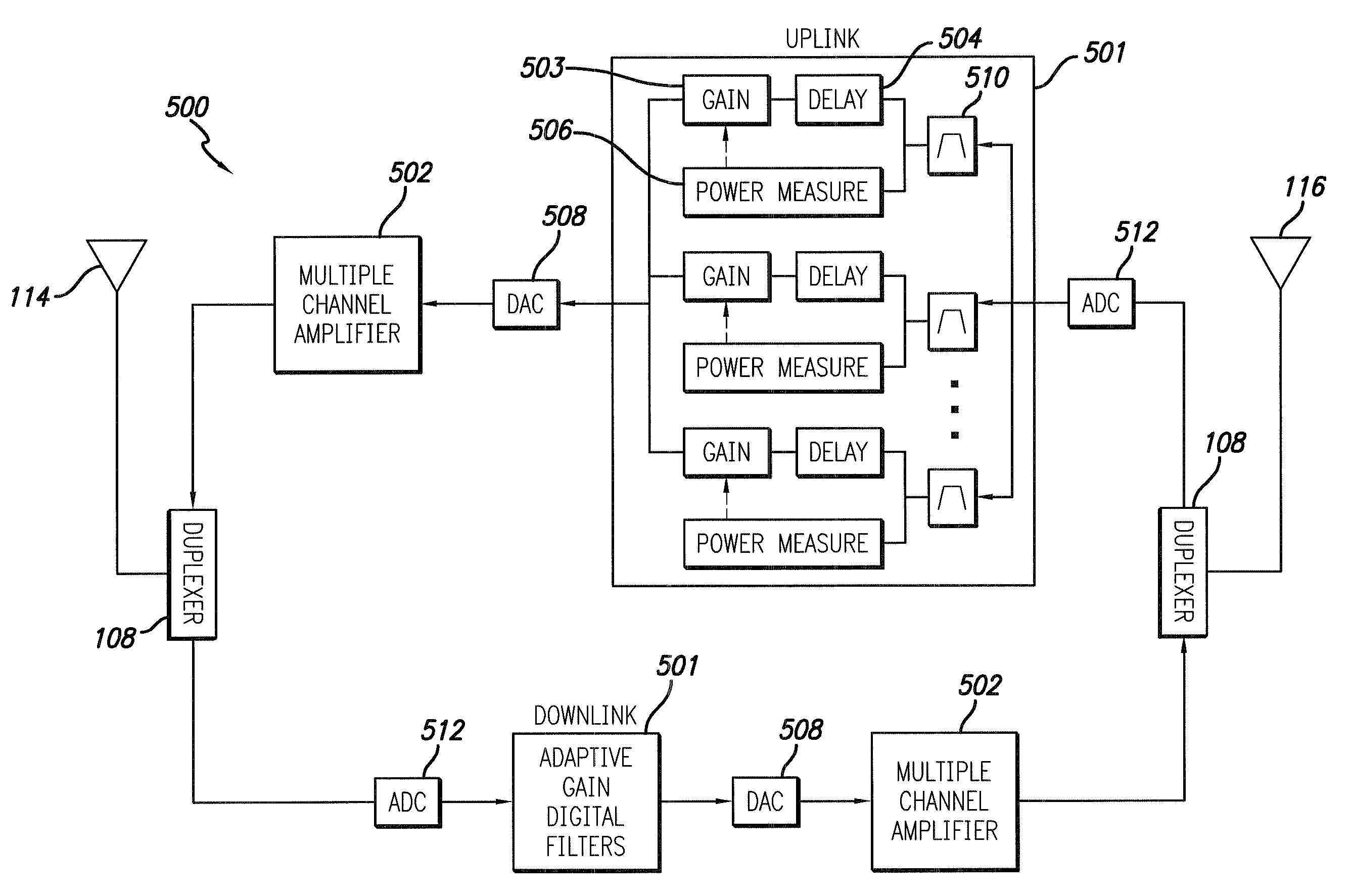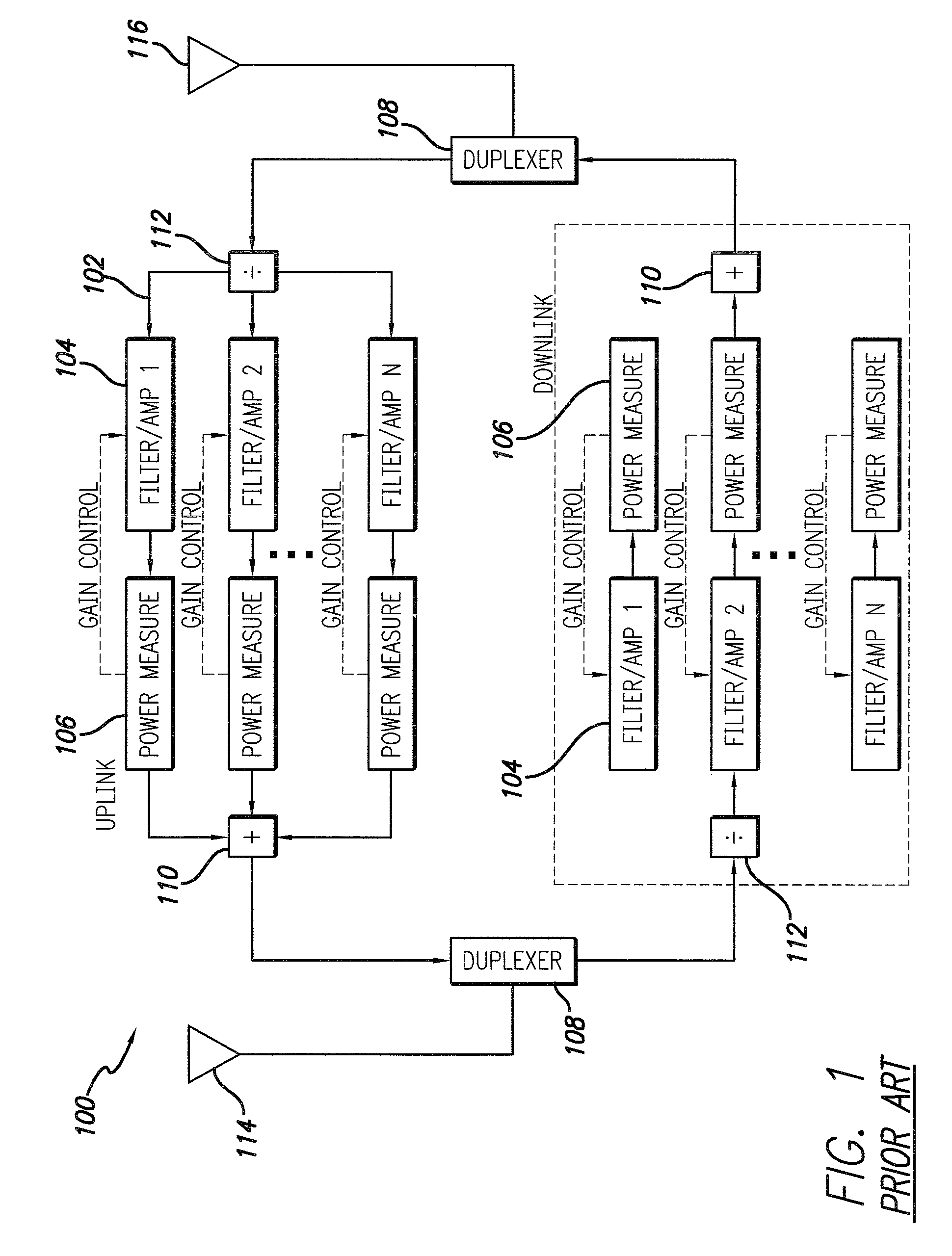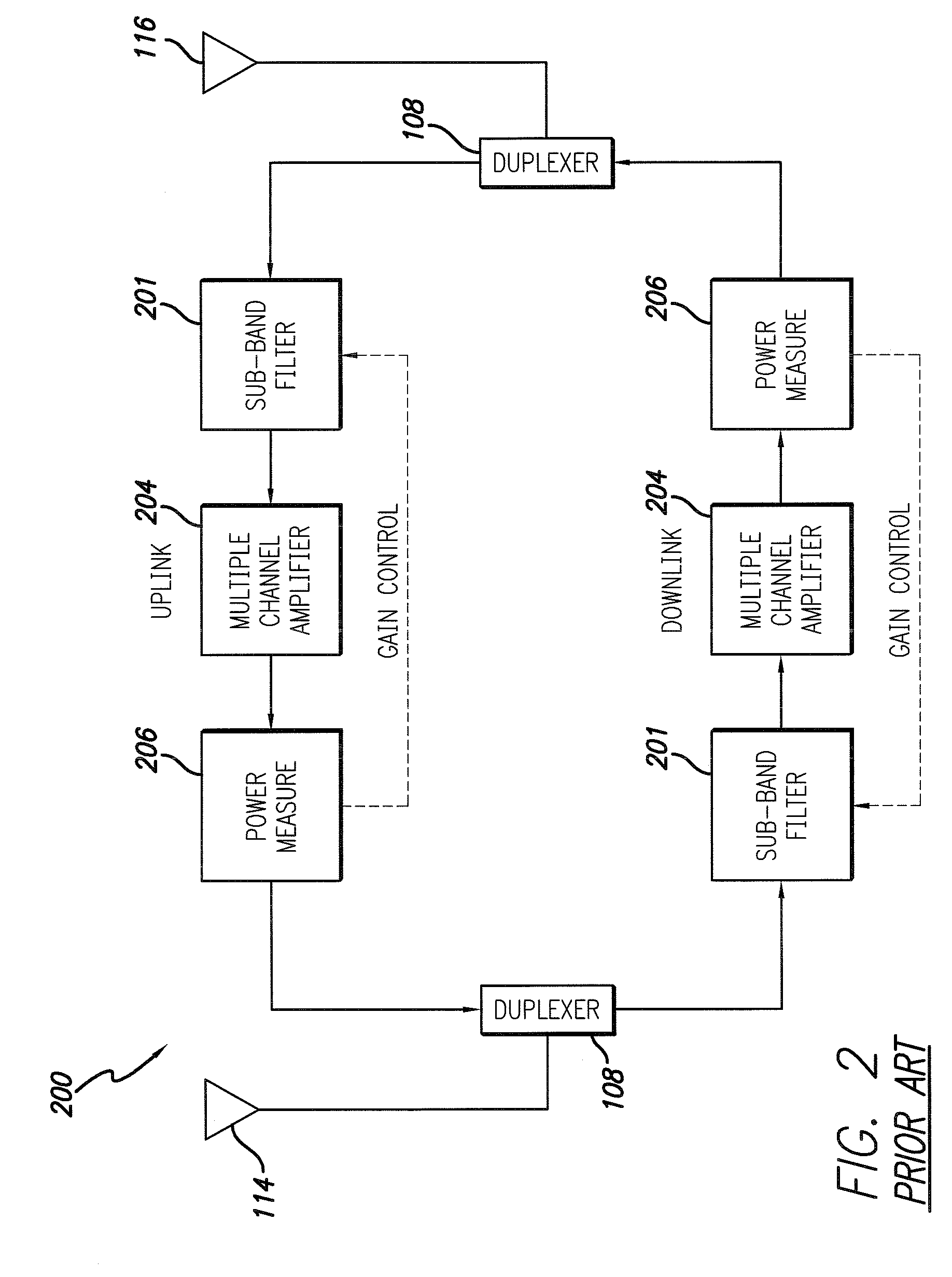Wireless repeater with smart uplink
a repeater and wireless technology, applied in repeater/relay circuits, frequency-division multiplexes, transmission monitoring, etc., can solve the problems of repeater systems with significant uplink performance limits, repeater systems encounter further performance limits, limit the choice of repeater design and output capability, etc., to enhance wireless coverage for host base stations
- Summary
- Abstract
- Description
- Claims
- Application Information
AI Technical Summary
Benefits of technology
Problems solved by technology
Method used
Image
Examples
Embodiment Construction
[0033]The present invention provides improved wireless over the air repeater and related communications systems and methods. A wireless over the air repeater receives signals, adds gain, and retransmits them. The incoming signals vary widely in amplitude according to the transmitter power and path loss. The outgoing, repeated signals require enough power to overcome path losses but not so much power as to overload the repeater's transmitter.
[0034]The input signals have a dynamic range that varies from weak and noisy to extremely strong. For global system for mobile communication (GSM) signals, the dynamic range can approach 70 dB because the weakest runs about −110 dBm and the strongest about −40 dBm. If the repeater had constant gain, the output would also require 70 dB of dynamic range. However, no reasonable power amplifier can provide enough power to add 70 dB to the maximum acceptable input. The minimum signal a repeater has to transmit depends on the path loss between its tran...
PUM
 Login to View More
Login to View More Abstract
Description
Claims
Application Information
 Login to View More
Login to View More - R&D
- Intellectual Property
- Life Sciences
- Materials
- Tech Scout
- Unparalleled Data Quality
- Higher Quality Content
- 60% Fewer Hallucinations
Browse by: Latest US Patents, China's latest patents, Technical Efficacy Thesaurus, Application Domain, Technology Topic, Popular Technical Reports.
© 2025 PatSnap. All rights reserved.Legal|Privacy policy|Modern Slavery Act Transparency Statement|Sitemap|About US| Contact US: help@patsnap.com



